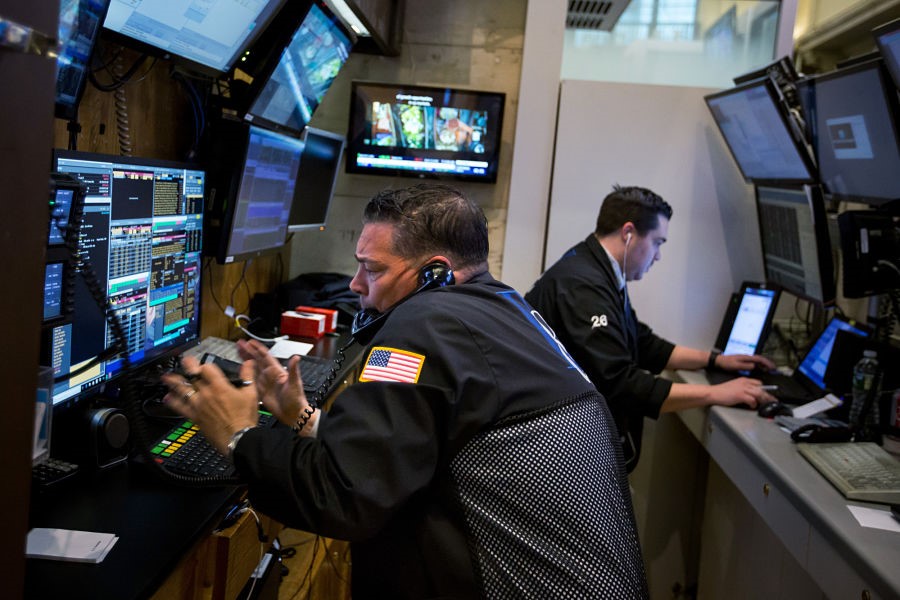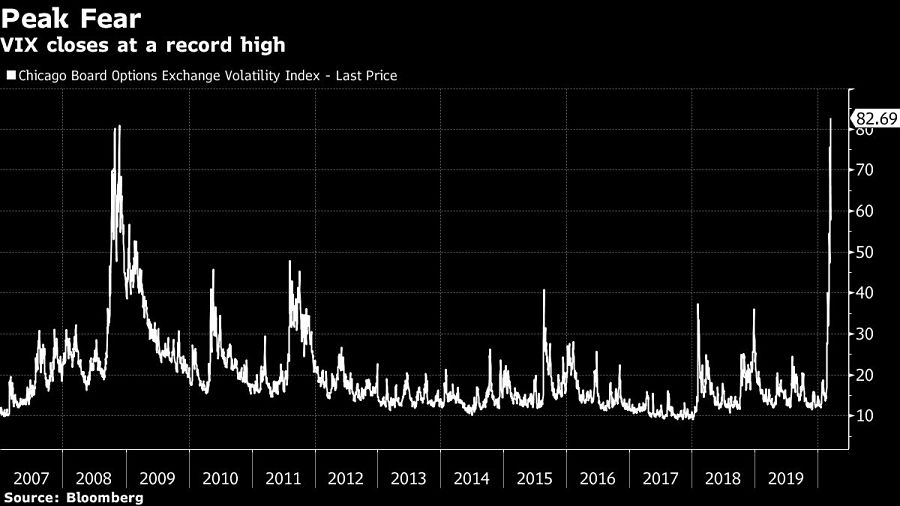

Volatility in U.S. stocks surged to a record after benchmark indexes suffered the biggest rout since 1987.
The Cboe Volatility Index ended Monday at 82.69 as the S&P 500 Index tumbled 12%. The fear gauge’s prior closing high was 80.86 on Nov. 20, 2008, after lawmakers postponed a vote on a plan to save the auto industry.
The gauge’s rose as high as 83.56 during Monday's session, short of its intraday record of 89.53 reached on Oct. 24, 2008.

“In 2008, you pretty much knew it was banking system breaking down, but didn’t know exactly how, and now it’s everything breaking down and how that spills over,” said Steve Sosnick, chief strategist at Interactive Brokers. “The latter is worse, I’d argue -- this is dislocating everything.”
The VIX Index measures the 30-day implied volatility of the S&P 500 Index based on out-of-the-money options prices. The current level implies daily swings of more than 5% are in the offing for the benchmark equity gauge, which is lower than what’s been realized over the past 10 sessions.

Rajesh Markan earlier this year pleaded guilty to one count of criminal fraud related to his sale of fake investments to 10 clients totaling $2.9 million.

From building trust to steering through emotions and responding to client challenges, new advisors need human skills to shape the future of the advice industry.

"The outcome is correct, but it's disappointing that FINRA had ample opportunity to investigate the merits of clients' allegations in these claims, including the testimony in the three investor arbitrations with hearings," Jeff Erez, a plaintiff's attorney representing a large portion of the Stifel clients, said.

Chair also praised the passage of stablecoin legislation this week.

Maridea Wealth Management's deal in Chicago, Illinois is its first after securing a strategic investment in April.
Orion's Tom Wilson on delivering coordinated, high-touch service in a world where returns alone no longer set you apart.
Barely a decade old, registered index-linked annuities have quickly surged in popularity, thanks to their unique blend of protection and growth potential—an appealing option for investors looking to chart a steadier course through today's choppy market waters, says Myles Lambert, Brighthouse Financial.
